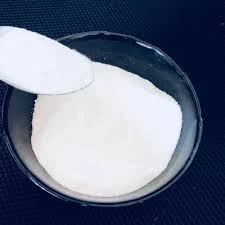
Dec . 14, 2024 12:07 Back to list
Developing Advanced Methods for Precision in HPMC Applications and Research
Understanding HPMC A Key Ingredient in Pharmaceuticals and Food Industry
Hydroxypropyl Methylcellulose (HPMC) is a versatile and important polymer that has found a wide range of applications in various industries. As a cellulose ether, it is derived from natural cellulose, which is a fundamental structural component of plants. HPMC stands out due to its unique properties that make it suitable for use in pharmaceuticals, food, cosmetics, and even construction materials.
Composition and Properties
HPMC is produced by modifying cellulose through chemical processes that introduce hydroxypropyl and methyl groups. This alteration not only enhances the solubility of cellulose in water but also imparts desirable properties such as thickening, emulsifying, and film-forming capabilities. The degree of substitution of the hydroxypropyl and methyl groups can be controlled during the manufacturing process, resulting in various grades of HPMC with specific characteristics suited for different applications.
One of the most remarkable properties of HPMC is its ability to form gels in aqueous solutions. This is particularly beneficial in pharmaceutical formulations, where it acts as a thickening agent and stabilizer. Moreover, HPMC is non-toxic and non-irritating, making it a safe choice for both oral and topical products.
Applications in Pharmaceuticals
In the pharmaceutical industry, HPMC is commonly used as an excipient in drug formulations. Its role is crucial as a binder in tablets, where it helps to enhance the integrity and stability of the formulation. Additionally, HPMC is utilized in controlled-release drug delivery systems, where its gel-forming ability can regulate the release of active ingredients over an extended period. This characteristic is particularly beneficial in managing chronic conditions, ensuring that patients receive a steady dose of medication without frequent dosing.
Moreover, HPMC is employed in the production of capsules and as a coating agent for various pharmaceutical products, improving their appearance and stability. The film-forming property of HPMC allows it to create protective coatings that can control the release of the active pharmaceutical ingredient while also providing a barrier against environmental factors.
hpmc

Use in Food Industry
Beyond pharmaceuticals, HPMC is also widely used in the food industry. Its thickening and emulsifying properties are valuable in the formulation of sauces, dressings, and dairy products. HPMC helps improve texture and consistency, providing a desirable mouthfeel that enhances the overall eating experience.
Furthermore, HPMC is a popular choice in gluten-free baking. It acts as a substitute for gluten, helping to bind other ingredients together and providing elasticity to dough. This enables gluten-free products to achieve a texture similar to that of traditional baked goods, meeting the needs of consumers with dietary restrictions.
Other Applications
The versatility of HPMC extends to cosmetics and personal care products. It is incorporated into lotions, creams, and shampoos, where it serves as a thickening agent, stabilizer, and film-former. Its non-toxic nature makes it suitable for sensitive skin, which is a critical consideration in cosmetic formulations.
Additionally, the construction industry has recognized the value of HPMC as a component in mortar and tile adhesives. Its ability to retain water and improve the adhesion of materials enhances the performance of construction products.
Conclusion
In conclusion, Hydroxypropyl Methylcellulose (HPMC) is a remarkable polymer with a diverse array of applications across multiple industries. Its unique properties — including solubility in water, thickening abilities, and non-toxic nature — make it a valuable ingredient in pharmaceuticals, food products, cosmetics, and construction materials. As consumer awareness and demand for high-quality products continue to grow, HPMC is likely to play an increasingly important role, driving innovation and enhancing product performance in various sectors. The future of HPMC is bright, as researchers and manufacturers explore new formulations and applications that leverage its advantageous characteristics.
-
Versatile Hpmc Uses in Different Industries
NewsJun.19,2025
-
Redispersible Powder's Role in Enhancing Durability of Construction Products
NewsJun.19,2025
-
Hydroxyethyl Cellulose Applications Driving Green Industrial Processes
NewsJun.19,2025
-
Exploring Different Redispersible Polymer Powder
NewsJun.19,2025
-
Choosing the Right Mortar Bonding Agent
NewsJun.19,2025
-
Applications and Significance of China Hpmc in Modern Industries
NewsJun.19,2025







